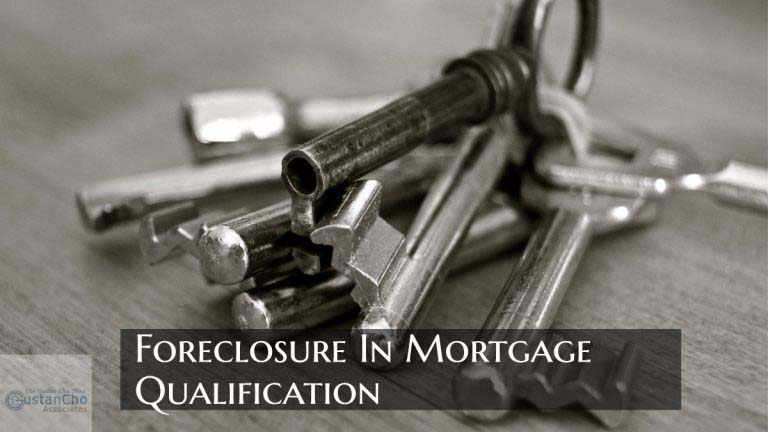This guide covers HUD guidelines versus lender overlays on FHA loans. There have been notable changes for HUD guidelines versus lender overlays on FHA loans, which may affect homebuyers. HUD guidelines on student loans excluded student loans on deferment from debt-to-income ratio calculations. This article will discuss HUD guidelines versus overlays on FHA loans.
One of the most notable changes to HUD Guidelines is that deferred student loans are now counted in the calculations of the borrower’s debt-to-income ratios.
This holds true even if the student loans have been deferred for 12 or more months. Before this change in deferred student loans, all deferred student loans that the student loan provider had deferred for at least 12 months. In the following paragraphs, we will cover HUD guidelines on FHA loans.
HUD Guidelines Versus Overlays on Student Loans
HUD guidelines on deferred student loans no longer allow deferred student loan payments to be exempt from debt-to-income ratio calculations. The borrower needs to know the monthly student loan payments after the student loan deferment period is over. If the student loan provider cannot provide the monthly payment amount, then 0.50% of the aggregate loan balance will be used as a monthly payment.
For those who have advanced degrees, such as attorneys and doctors, and have student loan balances like $100,000, 0.50% of the $100,000 or $500 per month will be used as a monthly student loan payment.
This holds true if their student loans are in deferment and they cannot get a monthly minimum student loan payment from their student loan provider. Borrowers with high student loan balances may need to go with conventional loans. Fannie Mae and Freddie Mac allow income-based repayment (IBR payments to be used on conventional Loans. The maximum debt-to-income ratio on conventional loans is capped at 50% DTI to get an approve/eligible per AUS.
Not Sure If FHA MIP or Conventional PMI Is Better for You?
The right choice can save you thousands over the life of your loan
HUD Guidelines Versus Overlays on Credit Scores
Credit scores play a major role when qualifying for a mortgage loan. All mortgage loan programs will have minimum credit score requirements. For example, Fannie Mae and Freddie Mac require a minimum 620 FICO credit score to qualify for a conventional loan. Jumbo lenders will most likely require a minimum credit score of 680 FICO. USDA programs will require a credit score of 580 FICO.
HUD, the parent of FHA has one of the most lenient credit score requirements out of all mortgage loan programs.
To qualify for a 3.5% down payment home purchase FHA loan, the borrower needs a minimum 580 credit score. Borrowers with 500 and 579 FICO credit scores can qualify for FHA loans. However, a 10% down payment will be required.
Updated HUD Guidelines on Non-Occupant Co-Borrowers
HUD allows borrowers to add non-occupant co-borrowers to their mortgage loans to qualify for income. The non-occupant co-borrowers must be related to the borrower by blood, law, or marriage. Acceptable non-occupant co-borrowers include parents, brothers and sisters, parents-in-law, brother and sisters-in-law, grandparents, grandparents-in-law, stepbrothers and stepsisters, step-parents, and aunt and uncles.
Some lenders are more strict with the relationship of the non-occupant co-borrowers to the main borrower, while others are more lax about it and take the word of the mortgage loan applicant.
If Non-occupant co-borrowers are not related to the main borrower by law, marriage, or blood, then HUD requires the home buyer to put a 25% down payment. There are no limits on the amount of non-occupant co-borrowers a borrower may add to the main borrower.
Updated HUD Guidelines Versus Overlays on Debt-To-Income Ratios
HUD Guidelines on debt-to-income ratios are as follows: If the borrower has credit scores lower than 620 FICO, the maximum debt-to-income ratio allowed is no greater than 43% DTI to get an approved/eligible per automated underwriting system. With credit scores higher than 620 FICO, the maximum front-income ratio is up to 46.9% front-end DTI and a maximum of 56.9% DTI on the back-end debt-to-income ratios.
Debt-to-income ratios on manual underwriting loans are up to the underwriter’s discretion and can go higher than 50% DTI if the borrower has compensating factors.
Borrowers with higher debt-to-income ratios can always add non-occupant co-borrowers to qualify for an FHA Loan or pay down their debts, eliminating their monthly debt payments, so they align with the proper HUD guidelines on debt-to-income ratios.
HUD Guidelines Versus Overlays on Manual Underwriting
Manual Underwriting is when a regular is downgraded to a manual underwrite. This is due to certain circumstances or when the Automated Underwriting System cannot render an approve/eligible per DU FINDINGS and LP FINDINGS and gets a referred/eligible automated findings. Manual underwrites require rental verification as well as compensating factors.
Compensating factors are positive factors that a borrower has that a mortgage underwriter will take into consideration.
For example, a larger down payment will be considered compensating factors and reserves. A part-time job that a borrower has but is not used to qualify for income in the debt-to-income ratio calculations will also be considered a strong compensating factor.
HUD Guidelines Versus Overlays on Collection Accounts
HUD does not require borrowers to pay off any outstanding unpaid collection accounts. Medical collections are exempt from any portion of the outstanding unpaid collection balance calculated for the borrower’s debt-to-income ratios.
With non-medical collection accounts with outstanding unpaid collection account balances totaling more than $2,000, 5% of the balance will be used to calculate the borrower’s debt-to-income ratios.
For example, if the borrower has an aggregate outstanding unpaid collection balance of $10,000 from all his collection accounts, the borrower does not have to pay this. However, 5% of the $10,000 or $500 will be counted as a monthly debt. This holds true even though the borrower does not have to pay this amount. It will count towards the debt-to-income ratio calculations by the mortgage underwriter.
Thinking About Refinancing Out of FHA MIP Into Conventional PMI?
If your credit, equity, or home value improved, it might be time to switch
HUD Guidelines Versus Overlays on Charge-Off Accounts
Charge-off accounts do not matter or count under updated HUD guidelines versus overlays. Most charge-off accounts reflect a balance on the borrower’s credit report. That balance of reporting on the borrower’s credit report does not matter. Unlike non-medical collection accounts, no mandatory percentage is removed from the outstanding unpaid collection account balance and used as a monthly payment. This HUD guidelines on charge-off accounts are for non-mortgage-related charge-off accounts.
HUD Guidelines Versus Overlays on Mortgage-Related Charged-Off Accounts
With mortgage-related charge-off accounts, there is a three-year waiting period from the date of the mortgage charged-off account to qualify for an FHA loan. This FHA Guidelines On Mortgage Charge Off Accounts counts for first and second mortgages. The three-year waiting period to qualify for an FHA Loan after either a first or second mortgage charge-off is three years from the date of the mortgage charge-off account that is reflected on the consumer’s credit report.
Many lenders will tell you that having a mortgage charge off is fine. You can qualify for FHA loans three years after a mortgage charge-off on your credit report.
There cannot be any balance on the credit report. These mortgage loan officers do not know what they are talking about. This is because most charge-off accounts, whether mortgage charge-offs or regular charge-off accounts, reflect an outstanding unpaid collection balance on the consumer’s credit report. The mortgage charge-off balance on the borrower’s credit report does not impact their qualification for an FHA loan.
HUD Guidelines Versus Overlays on Timeshare Foreclosures
Timeshares were extremely popular before the 2008 Real Estate And Mortgage Meltdown. However, due to the Great Recession of 2008, many timeshare property owners had to go through foreclosures. Timeshares are not considered mortgage loans under FHA and are consumer loans. There is no mandatory waiting period after timeshare foreclosures to qualify for an FHA loan. Unfortunately, some loan officers still tell many home buyers with prior timeshare foreclosures that they do not qualify for an FHA loan. This is due to them having a prior timeshare foreclosure. This is not the case.
HUD Guidelines on Credit Disputes
You cannot have any credit disputes on non-medical collection accounts with outstanding unpaid balances that total $1,000 or greater to qualify for an FHA loan. Many consumers do credit disputes in the hopes of deleting derogatory and inaccurate information from their credit reports. Having credit disputes on non-medical collection accounts with outstanding balances is not allowed. You cannot have credit disputes on charge-off accounts regardless of the balance.
No matter the balance, you cannot also have credit disputes on derogatory credit tradelines such as late payments, collections, and charge-off accounts.
Credit disputes on non-medical collection accounts with outstanding balances greater than $1,000 and on charge-off accounts will automatically halt the mortgage approval process until the credit disputes have been retracted.
HUD Guidelines on Credit Disputes
You can have credit disputes on non-medical collection accounts that have zero balances. Credit disputes on derogatory tradelines that are 24 months or older are exempt from retraction of the disputes. You can have credit disputes on non-medical collection accounts, no matter how much the outstanding unpaid collection balance is. Borrowers must understand that their credit scores will drop if they retract credit disputes. Mortgage loan originators should not issue pre-approval letters unless they thoroughly review the borrower’s credit report. They need to ensure no credit disputes exist on non-medical collection accounts or charged-off accounts.
HUD Guidelines on Down Payment
Two things homebuyers will need a down payment on a home purchase and will also have closing costs on a home purchase. The Federal Housing Administration, or FHA, is part of the United States Department of Housing and Urban Development, also known by many as HUD. HUD guidelines allow hard-working American families the opportunity to become a homeowner by putting down as little as a 3.5% down payment on a home purchase
A homebuyer with at least a 580 FICO can qualify for a home with as little as 3.5% down and lenient credit qualification requirements.
Homebuyers with credit scores between 500 and 579 FICO can qualify for a home with a 10% down payment. HUD guidelines also allow home buyers who do not have their down payment to get gift funds from a family member for their down payment. A family member can gift 100% of the 3.5% required and can be used for the home buyer’s down payment.
HUD Guidelines on Seller Concessions
Homebuyers who only have the down payment and cannot come up with the closing costs on a home purchase can get their closing costs covered by the home seller through a seller concession. HUD allows home sellers to cover part or all of the home buyer’s closing costs by offering the home buyer sellers concessions of up to 6%.
The maximum allowed for seller concessions is 6%. Any overage in seller concessions needs to go back to the home seller and cannot be returned to the homebuyer.
It is key that seller concessions are not wasted. Any overages in seller concessions are normally used to buy down the FHA loan rate by paying points. You can use seller concessions to buy down the rate.
HUD Guidelines on FHA Loan After Bankruptcy
Two types of bankruptcies exist: Chapter 7 Bankruptcy is a total liquidation. Chapter 13 Bankruptcy is the restructuring of the petitioner’s debts. There is a 2-year mandatory waiting period after the discharge date of a Chapter 7 bankruptcy to qualify for an FHA loan.
Homebuyers can qualify for an FHA Loan one year into a Chapter 13 Bankruptcy reorganization plan with the approval of the Chapter 13 Bankruptcy Trustee.
This holds true as long as they can provide documentation that they have made timely payments to their creditors for the past 12 months. There is no waiting period after a Chapter 13 bankruptcy discharge to qualify for an FHA loan. However, if the Chapter 13 bankruptcy discharge has not been seasoned for at least two years, it must be manually underwritten, and manual underwriting guidelines will apply.
Get a Custom Quote Comparing FHA and Conventional Side by Side
See your rate, payment, and mortgage insurance cost on both loan types before you decide
HUD Guidelines on FHA Loan After Foreclosure, Deed-in-Lieu of Foreclosure, Short-Sale
There is a three-year mandatory waiting period to qualify for an FHA loan after the date of the sheriff’s sale or the date the deed of the property has been transferred out of the homeowner’s name and into the name of the lender or new home buyer after a foreclosure or deed-in-lieu of foreclosure. After a short sale, there is a three-year mandatory waiting period to qualify for an FHA loan. The start date of the waiting period is from the date of the short sale, which is reflected in the HUD Settlement Statement.
Updated HUD Guidelines on FHA Loan After Loan Modification
A mortgage loan modification is when a homeowner has restructured their home loan with their lender due to extenuating circumstances. The outcome was modifying their original mortgage loan agreement, often called the note. There are various types of mortgage loan modifications.
The homeowner’s lender may add the mortgage payments that were in arrears to the balance of the homeowner’s mortgage loan balance.
The lender may reduce the mortgage rate to make the mortgage payments more affordable. The lender can also discount the loan balance due to the property being upside down or underwater, reducing the monthly P.I.T.I. Or, the mortgage lender may do a combination or all of the above. There is a mandatory one-year waiting period after a loan modification to qualify for an FHA loan, and no late payments have occurred in the past 12 months.
HUD Guidelines on FHA Loans Versus Mortgage Overlays
The above is a basic rundown of HUD guidelines. Technically, if you meet all of the above requirements, there should be no reason why you cannot qualify for an FHA loan and purchase and close your home. Unfortunately, many lenders have something called overlays. Lender overlays are lending guidelines that require their financial institution to set higher standards than the minimum HUD guidelines. This is not against the law. Any lender can set higher lending standards than those just set by the HUD.
Most banks require a 640 Credit score for borrowers, although FHA only requires a 580 credit score for a 3.5% down payment home purchase loan.
Most banks will not approve a borrower with outstanding unpaid collection accounts, including medical and charge-off accounts, where FHA does not require the borrower to pay off outstanding accounts. If you are told you do not qualify for an FHA loan due to lender overlays, contact Gustan Cho Associates at 800-900-8569 or text us for a faster response. Or email us at gcho@gustancho.com. Gustan Cho Associates and the team of mortgage loan originators specialize in FHA Loans with no lender overlays. We are available evenings, weekends, and holidays seven days a week.
Stop Guessing Which Mortgage Insurance Costs Less
Sometimes FHA wins. Sometimes conventional PMI is cheaper. The answer depends on your file









